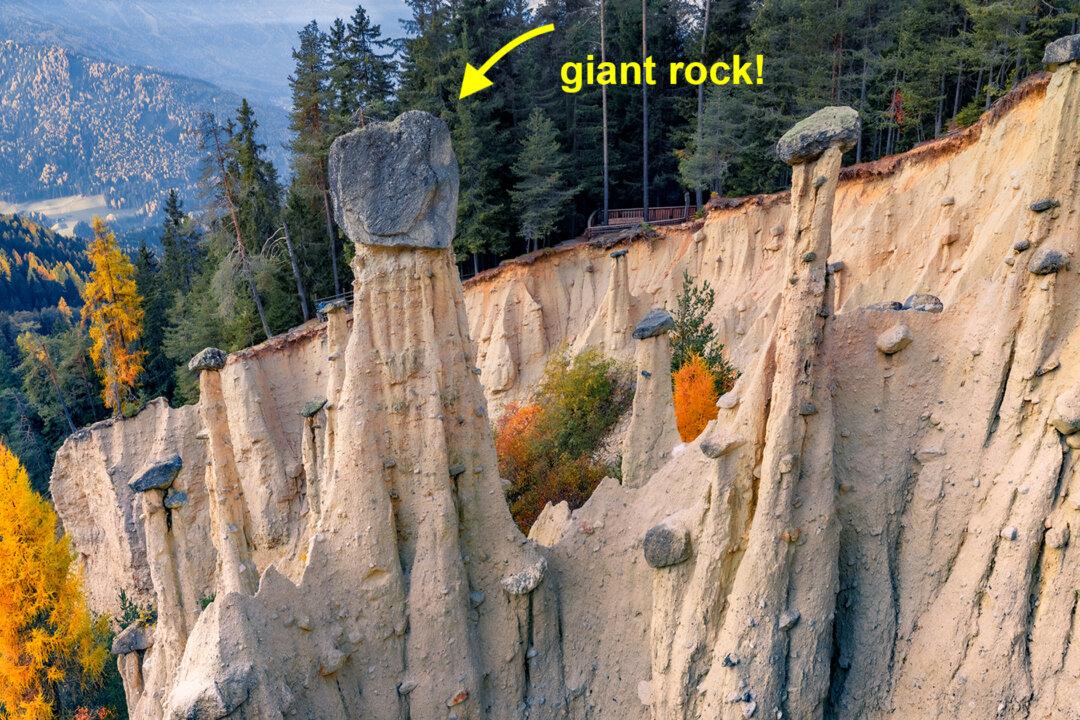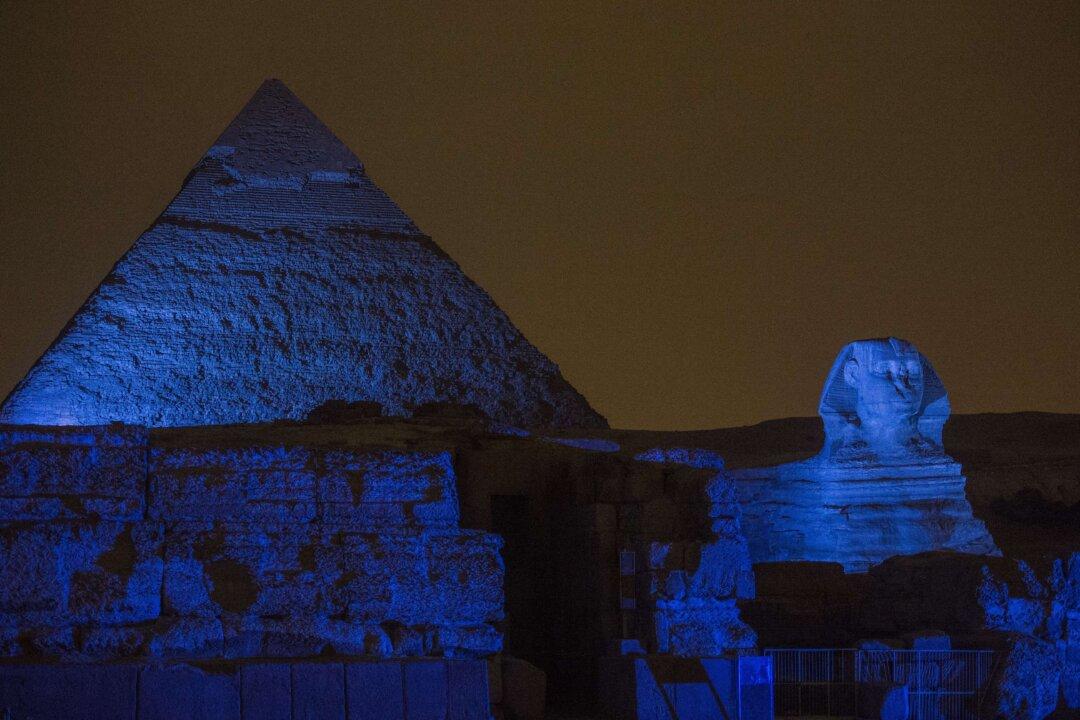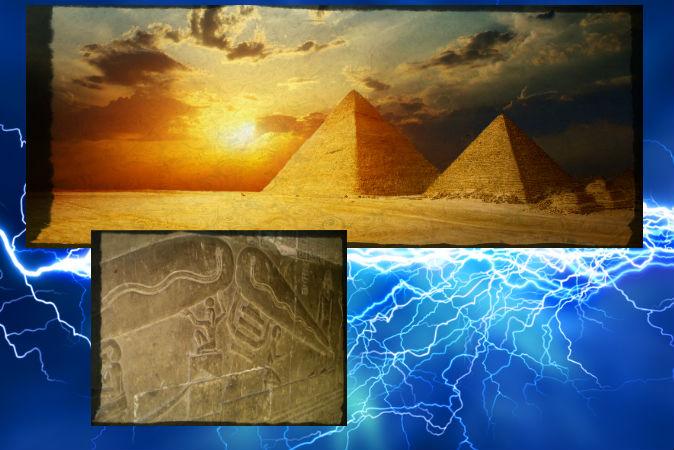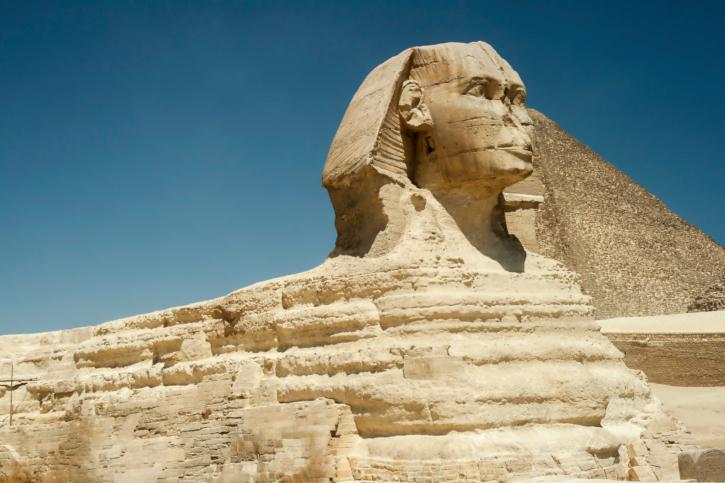Focus
pyramids
Scientists Declare Discovery of Two Cavities in Great Pyramid at Giza (Video)
Scientists working with the Operation ScanPyramids project say they’ve discovered cavities in the Great Pyramid of Giza, perhaps indicating the fabled corridors and chambers really do exist.
|
From Stonehenge to Nefertiti: How High-Tech Archaeology Is Transforming Our View of History
A recent discovery could radically change our views of one of the world’s most famous archaeological sites, Tutankhamun’s tomb.
|
Particles Could Reveal Clues to How Egypt Pyramid Was Built
An international team of researchers said Sunday they will soon begin analyzing cosmic particles collected inside Egypt’s Bent Pyramid to search for clues as to how it was built and learn more about the 4,600-year-old structure.
|
Egypt to Scan Pyramids, Seeking New Discoveries
Scientists will scan four of Egypt’s ancient pyramids starting next month using waves, particles and thermal imaging in order to see what lies beneath their surface.
|
Man Finds a Hidden Passage to Great Pyramids Beneath His House (Video)
For decades archaeologists have been searching for a passageway connected to the Great Pyramid, but it was a man digging around his own house who found it.
|
In Search of the Legendary 1,000-Foot White Pyramid of Xi'an
Mixed in with the reality of impressive tombs in China, is a legend of an enormous 1,000-foot white, jewel-capped pyramid that would outshine even the Great Pyramid of Giza. Could it be real?
|
Ancient Egypt Illuminated by Electricity?
Did the Ancient Egyptians have knowledge of electricity? This mystery fascinates modern researchers, who are puzzled by a series of ancient artifacts and engravings that imply they did.
|
The Riddle of the Sphinx and Its Controversial Answer
Some say the Great Sphinx of Egypt is thousands of years older than it is commonly held to be, a point of controversy that has rippled through the archaeological community for decades.
|
10 Amazing Subterranean Structures From the Ancient World
From ancient cisterns and water systems to mysterious caves, underground crypts, subterranean temples and even entire cities built beneath the earth, what our ancient ancestors have achieved is both mind-boggling and breathtaking.
|
5 Mysterious Ruins That Predate Known Civilization?
Here’s a look at prehistoric structures thought to defy the current understanding of history—the Bosnian Pyramid, Gobekli Tepe, Yonaguni Monument, the structure discovered in the Gulf of Khambhat, and Bimini Road.
|
Scientists Declare Discovery of Two Cavities in Great Pyramid at Giza (Video)
Scientists working with the Operation ScanPyramids project say they’ve discovered cavities in the Great Pyramid of Giza, perhaps indicating the fabled corridors and chambers really do exist.
|
From Stonehenge to Nefertiti: How High-Tech Archaeology Is Transforming Our View of History
A recent discovery could radically change our views of one of the world’s most famous archaeological sites, Tutankhamun’s tomb.
|
Particles Could Reveal Clues to How Egypt Pyramid Was Built
An international team of researchers said Sunday they will soon begin analyzing cosmic particles collected inside Egypt’s Bent Pyramid to search for clues as to how it was built and learn more about the 4,600-year-old structure.
|
Egypt to Scan Pyramids, Seeking New Discoveries
Scientists will scan four of Egypt’s ancient pyramids starting next month using waves, particles and thermal imaging in order to see what lies beneath their surface.
|
Man Finds a Hidden Passage to Great Pyramids Beneath His House (Video)
For decades archaeologists have been searching for a passageway connected to the Great Pyramid, but it was a man digging around his own house who found it.
|
In Search of the Legendary 1,000-Foot White Pyramid of Xi'an
Mixed in with the reality of impressive tombs in China, is a legend of an enormous 1,000-foot white, jewel-capped pyramid that would outshine even the Great Pyramid of Giza. Could it be real?
|
Ancient Egypt Illuminated by Electricity?
Did the Ancient Egyptians have knowledge of electricity? This mystery fascinates modern researchers, who are puzzled by a series of ancient artifacts and engravings that imply they did.
|
The Riddle of the Sphinx and Its Controversial Answer
Some say the Great Sphinx of Egypt is thousands of years older than it is commonly held to be, a point of controversy that has rippled through the archaeological community for decades.
|
10 Amazing Subterranean Structures From the Ancient World
From ancient cisterns and water systems to mysterious caves, underground crypts, subterranean temples and even entire cities built beneath the earth, what our ancient ancestors have achieved is both mind-boggling and breathtaking.
|
5 Mysterious Ruins That Predate Known Civilization?
Here’s a look at prehistoric structures thought to defy the current understanding of history—the Bosnian Pyramid, Gobekli Tepe, Yonaguni Monument, the structure discovered in the Gulf of Khambhat, and Bimini Road.
|


















